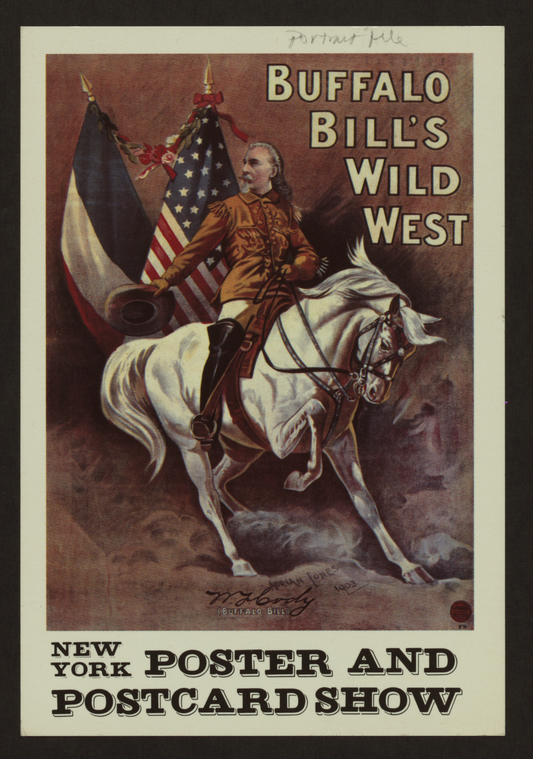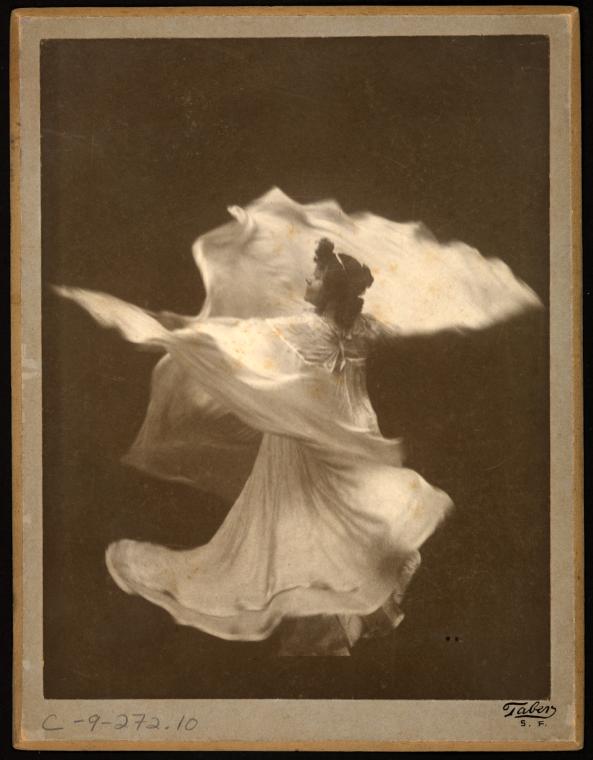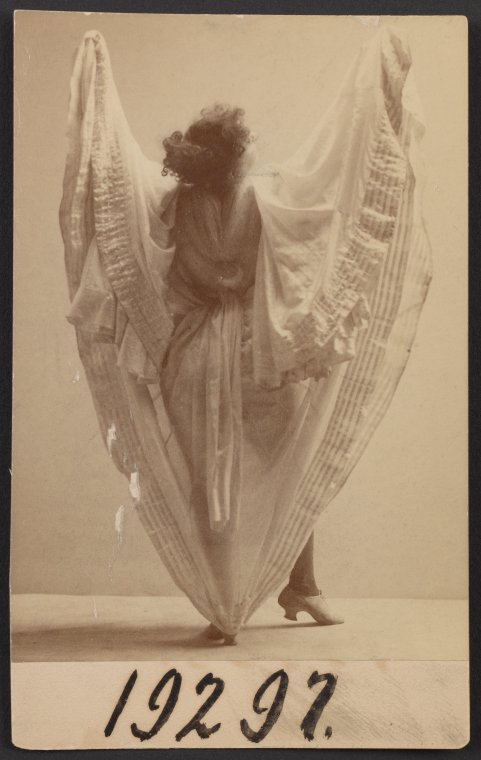150 Years of Loïe Fuller, Modern Dance Pioneer
150 years after her birth in Fullersburg, Illinois on January 15, 1862, Marie Louise "Loïe" Fuller is less well known than her peers. Yet her work, flowing and abstract and free from the constraints of classical ballet, predated and paved the way for more familiar modern dance pioneers like Isadora Duncan and Ruth St. Denis.
On April 12, the New York Public Library for the Performing Arts will celebrate the 150th anniversary of Loïe Fuller's birth with a program by Jody Sperling, the Founder and Artistic Director of Time Lapse Dance, as well as a scholar and interpreter of Loïe Fuller's style. In conjunction with the program, we have put together a small exhibit of materials on Fuller from the Jerome Robbins Dance Division. The exhibit is on the Library's third floor and will be available to view through June 2.

Fuller would go on to great acclaim in performances in Paris at theatres such as the Folies-Bergère, the Théâtre des Champs-Elysées, the Théâtre des Arts and, at long last, the prestigious Paris Opera in 1920. At the Exposition Universelle, the 1900 world fair in Paris, she even had her own eponymous theatre, designed by the Art Nouveau architect Henri Sauvage.
Fuller associated with and inspired many of the leading artists and thinkers of the era. She was friends with the sculptor Auguste Rodin, and inspired posters and paintings by the Post Impressionist artists Jules Chéret and Henri de Toulouse-Lautrec. The Symbolist poet Stéphane Mallarmé called her dancing the "theatrical form of poetry par excellence" and hailed Fuller as "an artist of intoxication and industrial achievement." Rodin and the Nobel Prize winning writer Anatole France lauded her "instinctive" and "natural gifts," predicting that "her effects, lights, and 'mise-en-scène' are all things which will be studied."
 For Fuller was not just a choreographer and dancer. She developed and patented set designs, costume designs, and stage lighting techniques, such as this mechanism for stage underlighting:
For Fuller was not just a choreographer and dancer. She developed and patented set designs, costume designs, and stage lighting techniques, such as this mechanism for stage underlighting:

 Fuller's experimentation with light extended beyond live performance to film. She produced a full length film, Le Lys de la Vie (The Lily of Life), based on a story by her friend Queen Marie of Romania. The film employed innovative special effects for the time, such as negative images and slow motion, to evoke the fairy tale nature of the narrative.
Fuller's experimentation with light extended beyond live performance to film. She produced a full length film, Le Lys de la Vie (The Lily of Life), based on a story by her friend Queen Marie of Romania. The film employed innovative special effects for the time, such as negative images and slow motion, to evoke the fairy tale nature of the narrative.
In her insatiable curiosity (as well as her quest to stay ahead of her many imitators), Fuller consulted with Thomas Edison and Marie and Pierre Curie on developments in electric lighting, phosphorescent salts, and the possible use of radium on stage:
"I explained to Mr. Edison the idea of permeating a dress with these salts — and I left a large scarf with him to experiment upon. I never knew the results, because some years later — during another visit to N.Y., I found he had given up his laboratory. The results were so harmful to the men who worked with the acids and the x-ray. I had not done anything myself in the phosphorescence but I was still intensely interested.
"I am always deluged with light, and I wanted to dance without any at all. That it was science never occurred to me."
Read E-Books with SimplyE
 With your library card, it's easier than ever to choose from more than 300,000 e-books on SimplyE, The New York Public Library's free e-reader app. Gain access to digital resources for all ages, including e-books, audiobooks, databases, and more.
With your library card, it's easier than ever to choose from more than 300,000 e-books on SimplyE, The New York Public Library's free e-reader app. Gain access to digital resources for all ages, including e-books, audiobooks, databases, and more.
If you don’t have an NYPL library card, New York State residents can apply for a digital card online or through SimplyE (available on the App Store or Google Play).
Need more help? Read our guide to using SimplyE.



Comments
Like fuller
Submitted by Anonymous (not verified) on April 3, 2012 - 11:22pm